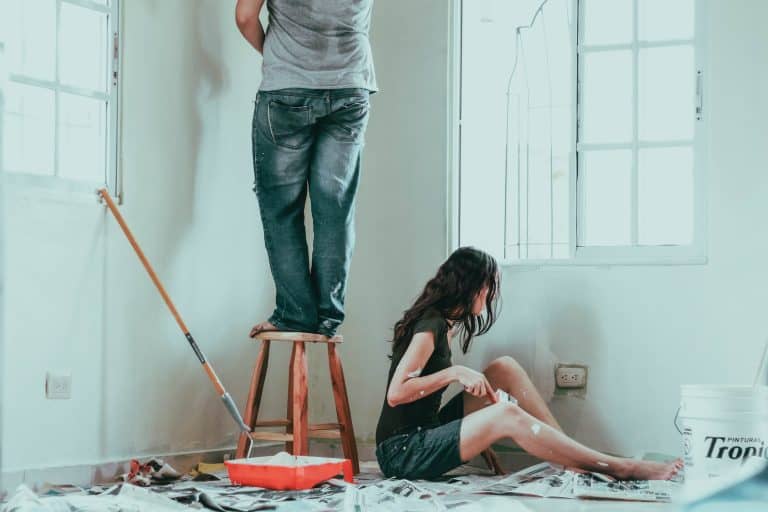Home maintenance is a vital aspect of responsible homeownership, and mastering the art of DIY repairs can save you both time and money in the long run. In this extensive guide, we’ll explore various home improvement projects, essential repair techniques, and the importance of maintaining a comprehensive maintenance checklist. Let’s dive into the world of DIY home maintenance, covering everything from fixing a running toilet to addressing rot issues.
Creating a Home Maintenance Checklist
To start our journey, let’s emphasize the importance of having a structured home maintenance checklist. This tool acts as your roadmap to a well-maintained home. Regular inspections and timely repairs can prevent minor issues from escalating into major problems, saving you from costly repairs down the line.
Essential DIY Repair Techniques

As a homeowner, encountering household issues is inevitable. However, armed with some basic know-how and the right tools, you can tackle these problems head-on, saving time and money. Let’s delve into some essential DIY repair techniques that address common issues often faced at home.
Fixing a Leaky Faucet
Step-by-Step Instructions:
- Turn Off Water: Before starting any work, ensure to turn off the water supply to the affected faucet.
- Disassemble the Faucet: Remove the handle and unscrew the faucet assembly to expose the inner parts.
- Replace Washers or O-Rings: Inspect the washers and O-rings for wear or damage. Replace them with new ones.
- Reassemble the Faucet: Put the faucet back together in the reverse order, ensuring a tight fit.
Basic Tools Required: Adjustable wrench, screwdrivers, replacement washers or O-rings.
Repairing Hardwood Floors
Step-by-Step Instructions:
- Clean the Area: Remove any dirt or debris from the damaged area.
- Apply Wood Glue: If dealing with separated planks or gaps, apply wood glue and press the pieces together firmly.
- Fill Nail Holes: Use wood filler to fill in nail holes or minor cracks. Sand down for a smooth finish.
- Finish and Seal: Apply a protective sealant or polish to restore the floor’s shine and protect it from future damage.
Basic Tools Required: Wood glue, wood filler, sandpaper, finish or sealant.
Dealing with Valve Bodies and Damp Sponges
Valve Body Repair:
- Valve bodies can sometimes malfunction, leading to water pressure or temperature issues. Consider seeking professional help or consulting manuals specific to your fixture.
Damp Sponge Remediation:
- Address damp sponges by drying them thoroughly. Use a combination of warm water and mild soap to clean and remove any potential mold or mildew.
Remember, understanding these repair techniques equips you to handle various issues around the house. However, for complex plumbing problems involving valve bodies or persistent dampness issues, it’s advisable to seek professional assistance.
Home Improvement Projects for All Skill Levels

Embarking on the path of home improvement doesn’t have to be daunting; there are projects for every skill level. Whether you’re just starting your DIY journey or you’re a seasoned enthusiast, here’s a curated list of projects that enhance both the functionality and aesthetics of your home.
Beginner Level: Fixing Door Locks and Clogged Toilets
For those taking their first steps into the world of DIY, start with projects that are both straightforward and practical. Fixing door locks is an excellent way to boost your confidence. It involves simple tasks like tightening screws, lubricating the mechanism, and ensuring smooth operation. Similarly, tackling a clogged toilet is a common issue that can be easily resolved with a plunger or a plumbing snake. These projects introduce you to basic tools and fundamental repair techniques.
Intermediate Level: Installing a Ceiling Fan and Dryer Vent
Once you’ve mastered the basics, it’s time to elevate your skills. Installing a ceiling fan is a fantastic intermediate project. It not only adds comfort to your living spaces but also introduces you to electrical work. Follow the manufacturer’s instructions carefully, and soon you’ll be enjoying a breeze of your own creation.
Another project for this skill level is addressing your dryer vent. Cleaning or replacing a vent not only prevents a potential fire hazard but also improves the efficiency of your dryer. This project requires attention to detail and some knowledge of your home’s electrical and ventilation systems.
Advanced Level: Installing an HVAC System and Exterior Doors
For those ready to tackle more complex projects, installing an HVAC system might be the next frontier. While this task requires a deeper understanding of your home’s heating, ventilation, and air conditioning systems, the rewards in terms of comfort and energy efficiency are significant. It’s recommended to consult with professionals or do extensive research before undertaking this project.
Finally, for the DIY enthusiast looking for a challenge, installing exterior doors is a rewarding project. This involves precise measurements, carpentry skills, and a good understanding of the home’s structure. Properly installed exterior doors enhance security, insulation, and the overall aesthetic appeal of your home.
Tips for Efficient Home Maintenance

When it comes to maintaining your home, time is a valuable commodity. To help you make the most of it, let’s delve into some time-saving tips that will streamline your home maintenance routine. By focusing on regular inspections, organization strategies, and quick troubleshooting, you can keep your home in top-notch condition without sacrificing your weekends.
Regular Inspections: The Key to Prevention
Regular inspections are the cornerstone of efficient home maintenance. By dedicating a small amount of time to check key areas of your home on a routine basis, you can catch potential issues before they escalate. Consider creating a monthly or quarterly inspection checklist that covers essential areas like plumbing, electrical systems, and structural elements. This proactive approach not only saves time in the long run but also helps you address problems when they are easier and less costly to fix.
Organize Your Maintenance Schedule: A Calendar is Your Friend
Maintaining a well-organized schedule is crucial for efficient home maintenance. Use a calendar to plan and track your routine inspections, repairs, and maintenance tasks. This not only helps you stay on top of upcoming responsibilities but also allows you to allocate time for specific projects. Whether it’s checking for water leaks, changing air filters, or inspecting the exterior of your home, having a schedule ensures that no task is overlooked, preventing potential issues from becoming major headaches.
Quick Troubleshooting: Addressing Issues in a Few Hours
Life is busy, and dedicating an entire weekend to home maintenance might not be feasible. That’s why it’s essential to know how to troubleshoot common issues efficiently. From fixing a leaky faucet to addressing minor electrical glitches, we’ll provide you with insights on handling these tasks within just a few hours. Quick fixes not only save time but also prevent small problems from turning into major repairs.
Prioritize High-Impact Tasks: Focus on What Matters Most
Not all maintenance tasks are created equal. Identify high-impact tasks that contribute significantly to the overall well-being of your home. Addressing these tasks first ensures that you’re tackling the most critical issues promptly. Whether it’s sealing gaps in doors and windows to save energy or checking your HVAC system for optimal performance, prioritizing high-impact tasks maximizes the efficiency of your maintenance efforts.
Invest in Time-Saving Tools: Work Smarter, Not Harder
Technology has brought forth a plethora of tools designed to make home maintenance more efficient. Invest in tools that can help you get the job done quickly and effectively. From cordless power tools for repairs to smart home devices that monitor your home’s systems, leveraging technology can significantly reduce the time and effort required for maintenance tasks.
Sustainable and Eco-Friendly Home Maintenance

Welcome to the sustainable and eco-friendly side of home maintenance! In this section, we’ll explore how you can adopt green alternatives for common maintenance tasks, contributing not only to a healthier environment but also enhancing the longevity of your home. Let’s delve into eco-conscious choices for various aspects of home repairs.
1. Wood Filler for Occasional Repairs: When addressing those inevitable nail holes or screw holes in your walls or furniture, consider opting for eco-friendly wood filler. Traditional fillers often contain harmful chemicals, but there are now sustainable alternatives available. These not only do the job effectively but also contribute to better indoor air quality by avoiding the release of harmful compounds.
2. Responsibly Disposing of Materials: One key aspect of sustainable home maintenance is ensuring that waste is disposed of responsibly. Whether you’re working on a plumbing project, replacing a washer, or just doing routine repairs, be mindful of how you dispose of old materials. Consider recycling or repurposing materials whenever possible, reducing the overall environmental impact of your home maintenance endeavors.
3. Indoor Air Quality in Plumbing Projects: Undertaking a plumbing project? Opt for materials and practices that promote good indoor air quality. Choose low-VOC (volatile organic compounds) paints and sealants to prevent the release of harmful substances into the air. Additionally, when working on plumbing tasks, be aware of the potential for indoor air pollutants and take steps to mitigate them.
4. Drop Cloth and Its Environmental Impact: Using drop cloths is a common practice to protect surfaces during home repairs. Instead of opting for disposable plastic drop cloths, consider using a durable and reusable material like canvas. This not only reduces the amount of waste generated but also provides a more sustainable option for your DIY projects.
5. Cold Air and Energy Efficiency: Addressing drafts and cold air in your home? Before reaching for traditional solutions, consider eco-friendly alternatives. Seal gaps and cracks with sustainable materials like cork or recycled rubber. By enhancing your home’s insulation, you not only reduce the need for constant heating but also contribute to energy efficiency, ultimately lowering your carbon footprint.
6. The Importance of the Packing Nut: In various repair scenarios, especially when dealing with plumbing fixtures, the packing nut plays a crucial role. Opt for eco-friendly options made from sustainable materials. This small but significant choice can contribute to a more environmentally conscious approach to home maintenance.
7. Sustainable Practices for Screw Holes: Whether you’re assembling furniture or conducting repairs, screw holes are a common feature. Choose screws made from recycled materials and consider using a manual screwdriver instead of a power tool to reduce energy consumption. These small adjustments in your approach to screw holes can collectively make a positive impact on the environment.
Troubleshooting Common
When it comes to troubleshooting common issues in your home, timely solutions are key to maintaining a functional living space. If you’re grappling with a smelly dishwasher, try running a cycle with a mixture of baking soda and warm water to eliminate unpleasant odors. For a running toilet, often caused by a faulty flapper or a worn-out valve, a quick DIY fix involves replacing the flapper or installing a new washer.
Additionally, electrical system glitches can be daunting, but before reaching out to professionals, check for tripped circuit breakers and ensure all switches are in the right position. Our guide not only offers quick fixes but also helps you discern when it’s time to seek professional assistance, ensuring a well-maintained and stress-free home environment..
Final Thoughts: DIY Home Maintenance
In conclusion, DIY home maintenance is a journey that every homeowner should embark upon. Regular upkeep not only ensures your home stays in good shape but also empowers you to take control of your living space. By following the tips and techniques outlined in this comprehensive guide, you’ll be well on your way to becoming a proficient DIY homeowner, ready to tackle any issue that comes your way. Remember, a well-maintained home is a happy home!

